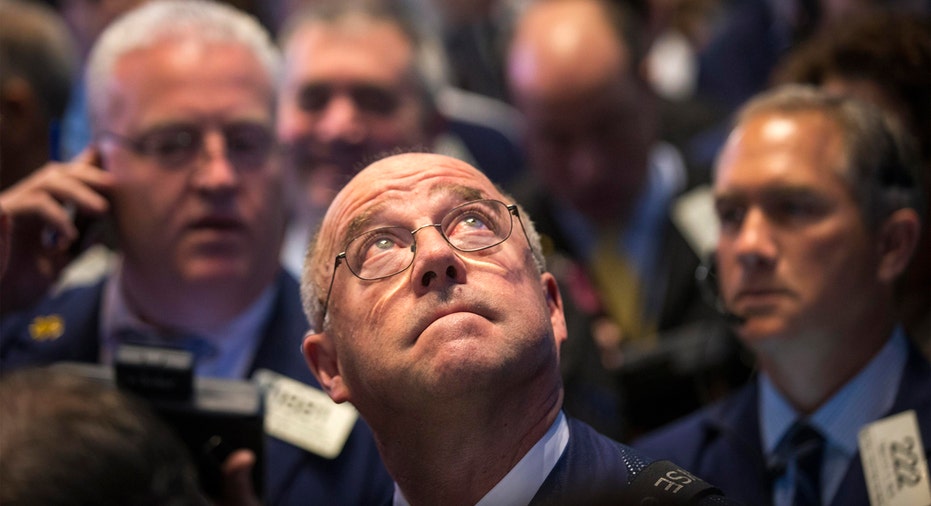Stocks End Mixed as Biotech Drags, Energy Jumps

U.S. equity markets were mixed as traders digest the latest international trade data and a surge in crude oil prices.
The Dow Jones Industrial Average was up 13 points, or 0.08% to 16790, while the S&P 500 slipped 7 points, or 0.36% to 1979, and the Nasdaq Composite paced 32 points lower, or 0.69% to 4748.
Health care was the biggest sector decliner, down nearly 2.4%, while energy jumped 2.2%.
Today’s Markets
Wall Street was mixed on Tuesday as traders in the U.S. parsed the latest economic data and searched for reasons to continue the bullish sentiment that propelled the Dow up more than 300 points in the prior session.
Ruggero de’Rossi, senior portfolio manager at Federated Investors, said the day’s market action is largely a bottoming-out process for the markets.
“We see a number of indicators pointing to a rebound in China in the fourth quarter. Most of the reason for the selloff was concern and panic about China, and part of it was the Fed…this process is not going to be exempt from volatility because there are still areas of uncertainty. That said, there are signs that there is going to be improvement in both areas, and that means more certainty about when liftoff is going to happen,” de’Rossi said.
Eyes are still firmly focused on key data as the Federal Reserve remains data dependent before making a final decision about when to hike short-term interest rates from historic lows.
On Tuesday, data from the Commerce Department showed the U.S. trade gap widened more than expected in August. The trade deficit widened to $48.33 billion, more than economists’ forecast for $47.4 billion. July’s figures were revised lower to $41.81 billion.
Deutsche Bank economists said the data was enough for it to pare back its third and fourth quarter GDP estimates thanks to a “significant deterioration” in net exports.
“U.S. exports are expected to be unchanged in the quarter. This is down from a 5.1% annualized increase in Q2, which followed a -6% West Coast port-and weather-related decline in Q1. At the same time, imports are on track to increase 10% in the quarter, the fastest gain since Q4 2014. This would have the effect of widening the trade deficit by $64 billion,” the note read.
Former Federal Reserve Chief Ben Bernanke, who saw the U.S. through the worst financial crisis since the Great Depression, spoke with FOX Business’ Maria Bartiromo Tuesday morning and said while it’s important to monitor the financial markets in respect to higher interest rates; it’s really all about the economy.
“The monetary policy is aimed at the inflation target of 2% and we’re not there yet. Inflation is still quite low; and also getting us back to full employment. And people are debating whether we’re there yet or whether we still have some distance to go before we can say the labor markets are back to normal. So, the monetary policy needs to depend on the data, and what’s happening in the economy. And I know for a fact the Fed looks at that extremely carefully,” Bernanke said.
In recent action, the yield on the benchmark 10-year U.S. Treasury bond fell 0.021 percentage point to 2.04%.
Alongside the data, investors had plenty of corporate news to digest as Pepsi (NYSE:PEP) posted its third-quarter results. The beverage giant revealed a beat on both the top and bottom line as commodity costs fell and snack and beverage demand rose in North America. Pepsi shares closed 1.3% higher.
After the closing bell, Yum Brands (NYSE:YUM) revealed its latest results. Wall Street expected the parent company of Taco Bell and Pizza Hut to post a quarterly profit of $1.07 a share on revenue of $3.68 billion.
Shares of DuPont (NYSE:DD) surged 7.7% after the American chemical company said after the bell on Monday that its chairman and CEO, Ellen Kullman, would retire from the company after spending 27 years there.
Elsewhere in the market, commodities were mostly higher. Crude prices rose globally after OPEC said it sees more demand for its oil as supply from non-members drops. U.S. prices jumped 4.9% to $48.53 a barrel, the highest settlement since Aug. 31. Brent, the international benchmark, was up 5% to $52.38 a barrel.
Meanwhile, metals were also broadly higher as gold rose 0.8% to $1,146 a troy ounce, while silver climbed 0.8% to $15.83 an ounce. Copper rose a fraction to $2.36 a pound.
Global markets were broadly higher on the second day of the trading week. In Europe, the Euro Stoxx 50, which tracks large-cap companies in the eurozone, rose 0.93%. The German Dax climbed 0.90%, while the French CAC 40 gained 0.95%, and the UK’s FTSE 100 climbed 0.43%.
The U.S. dollar was mixed against a basket of global currencies while the euro rose 0.73% against the greenback.



















